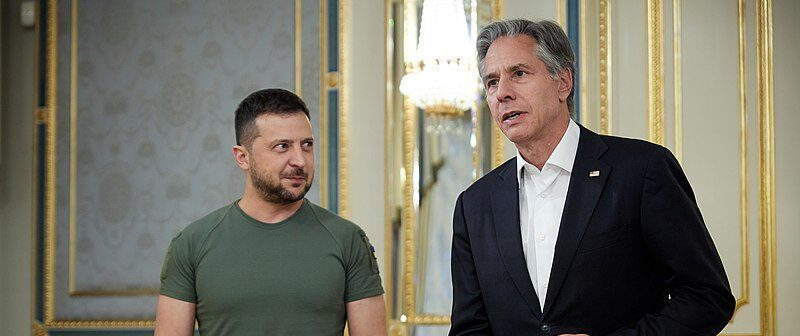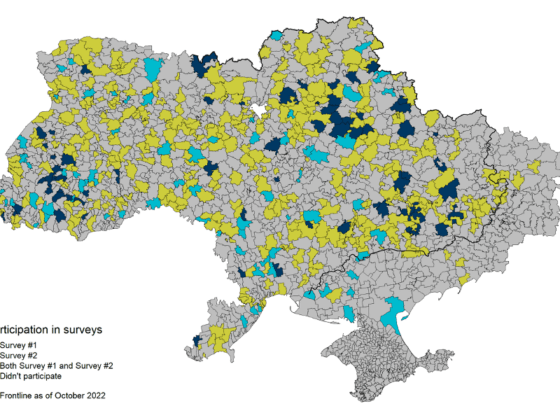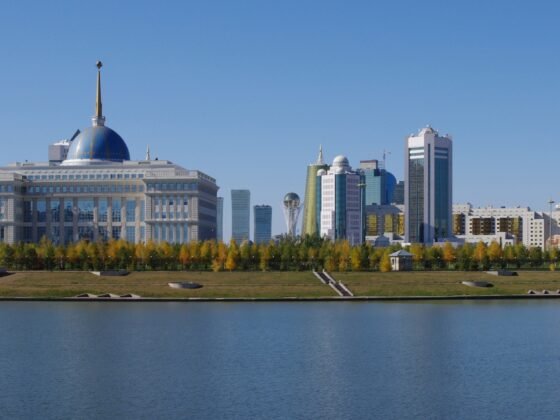Secretary Blinken’s recent visit to Ukraine stands out in a number of ways. Blinken had not been in Ukraine for exactly a year, since September 8, 2022. This is quite a long time considering the level of engagement between Kyiv and Washington since the start of Russia’s full-scale invasion against Ukraine in February 2022. Indeed, this engagement has been enormous and totally unprecedented—not just in the context of U.S.-Ukraine relations, but in U.S. international politics in general, especially since the end of the Cold War.
Perhaps there was a sense in Washington that there had been too long a gap between high-level visits. Of course, Ukrainian President Volodymyr Zelenskyy went to Washington late last year, and U.S. President Joe Biden was himself in Kyiv briefly in February of this year. Such a frequency of visits would be considered high in normal times, but these times are anything but normal, and the U.S.’s role, stakes, and interests with regard to Russia-Ukraine are colossal.
It is no secret that there has been some friction between the partners on a number of issues, but particularly with regard to the ongoing Ukrainian offensive, which aims to dislodge the Russian occupiers from Ukrainian lands. The experience of 2022 was close to stellar. The American military apparently worked closely with its Ukrainian counterpart in advising on the operations, resulting, among other things, in the successful liberation of a huge swath of land in Kharkiv region and also of the city of Kherson. The Russian military was not quite ready for this. Now, in 2023, things are different in the sense that Russian troops have used their time to prepare for the Ukrainian offensive to the maximum.
The task before the Ukrainian military is truly a gargantuan one. The U.S. military and those of Ukraine’s other partners trained many thousands of Ukrainian troops in preparation for the ongoing offensive. Yet once the offensive began, disagreements surfaced on issues like strategy/tactics, the direction of the strike, and the pace. In terms of strategy, Ukraine’s Western counterparts insisted on so-called combined arms operations. They also thought that Ukraine should throw everything it has in one direction, namely trying to cut the so-called “land corridor” between Donbas and Crimea. But the Ukrainian command, presumably not of their own will, opted for small, incremental steps instead.
As the offensive unfolded, too many anonymous sources in Washington began to be quoted as criticizing Ukraine for conducting the offensive in a way they perceived as wrong. This was received quite poorly in Ukraine, particularly among the Ukrainian political leadership. One of the most frequent counterarguments among Ukrainians has been that Kyiv cannot carry out a combined arms operation because it does not have all the arms elements—specifically air support—in place.
The mood in Ukraine has become more somber. This is due not solely to the slow pace of the offensive and the high number of casualties, even though this has caused a significant part of the gloom, but also to the belief that Ukraine’s partners have not provided sufficient arms to Ukraine, yet criticize it for not succeeding with the offensive. It must be noted that there is a delicate balance between Ukraine’s gratitude for Western (specifically U.S.) assistance, on one hand, and frustration with the West’s presumed timidity, ineptitude, and unwillingness to embrace Ukraine’s victory as the ultimate endgame, on the other. In the weeks prior to Blinken’s visit, that balance tilted toward the latter.
This seeming rift needed to be reversed. Optics matter, especially in times like these. Certainly, major decisions can be made without high-level visits. But visits have a quality of reassuring people—on both sides of the Atlantic, but also throughout the pro-Ukraine coalition of countries, in which the US plays a special role. For other allies, it is important to see that the US continues to carry the torch as the main actor and coordinator/facilitator of the pro-Ukraine coalition.
Speaking of that special role, perhaps there was a feeling in Washington that others in the coalition were “stealing the show,” capturing initiative away from the US. With longer-range missiles, these actors were the British and then the French. With F-16s, the recent moves by the Netherlands and Denmark, later joined by Norway, caught attention. By comparison, Washington looked like it was dragging its feet. This was not necessarily a good look—to be “leading from behind.” So it made sense for Secretary Blinken to go to Kyiv and announce a new assistance package, reminding everyone that the US is still very much in the driver’s seat. The visit might also have hinted that the issue of the longer-strike-range ATACMS missiles being delivered to Ukraine might be resolved positively soon.
Sending a message to Moscow has always been an important aspect of these visits, as has demonstrating American staying power and showing that the US is not going away. Blinken staying in Kyiv for two days, including one night—a first for a high-level U.S. official during the war—was a big deal. This was a sign of resilience and confidence of sorts, especially in the face of Moscow’s effort to show that they are not leaving occupied Ukrainian lands, even orchestrating so-called “elections” there the other day.
Finally, Blinken perhaps wanted to touch base with Zelenskyy and his team on a number of delicate issues, some of which necessitated sitting down and looking your counterpart in the eye. These include the issue of elections in Ukraine, both local/parliamentary and presidential. Should they take place under the current martial law and circumstances of total war or not?
That is a big question. And there is no consensus on it on either side of the Atlantic. How would it look for the image of Ukraine as a resilient democracy if these elections did not take place on time or were delayed indefinitely? But could you realistically conduct them at a time when all of Ukraine is being targeted by Russian strikes? If a decision is to be made on the rapidly approaching elections, Kyiv and Washington had better appear on the same side.
An even touchier issue: Is Ukraine ready for some sort of communication with Moscow on a possible ceasefire? What would this take? What sort of arrangement could there be? Despite its large-scale assistance to Ukraine, including, of course, lots of weapons, Washington has always had one eye on a diplomatic track, trying to see when and how non-military levers can come into play, and be ready for this moment. All in all, this visit was a positive development for the Ukraine-U.S. strategic partnership. It helped to smooth some differences and laid the foundation for further cooperation in the coming months and years.
Volodymyr Dubovyk is an Associate Professor in the Department of International Relations and
Director of the Center for International Studies at Odesa I. I. Mechnikov National University
(Ukraine).











